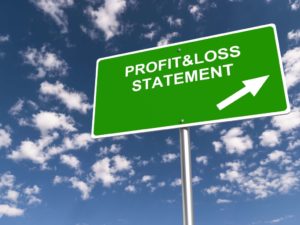With our stage set and our actors—beginning balance, net income, and dividends—in the limelight, the scene is ready for a demonstration of the retained earnings calculation in action. So, $14,500 would be the final figure to strut onto your balance sheet, ready to roll into the next period’s retained earnings calculation. This number isn’t just another entry on the books; it’s the measure of your company’s accumulated wealth over time that hasn’t been dished out to shareholders. Should your company decide to pay dividends, the exact amount you distribute nibbles away at the net income’s contribution to retained earnings. It’s crucial to remember that sales revenue, cost of goods sold, depreciation, and operating expenses—among other line items on your income statement—play a big part in shaping this number.
Example of Preparing a Statement of Retained Earnings
Over time, it shows the company’s accumulated profits that are reinvested in the business. While net income measures a company’s earnings for a single period, retained earnings show the accumulation of profits over time. Both figures are essential for assessing a company’s financial performance, with net income indicating short-term profitability and retained earnings displaying long-term economic strength through its reserves. The GAAP statement of retained earnings follows generally accepted accounting principles (GAAP). It provides a detailed account of changes in retained earnings over a specific why every freelancer should consider forming an llc period.
It’s a narrative you write with care, knowing each chapter influences the future of the company. Visualize this process as setting the stage before the hustle and bustle of business activities come into play, ensuring that the starting line is clearly marked. The beginning balance is your financial anchor, and from here, you’ll navigate through the fiscal ebbs and flows to chart the course of your retained earnings. It’s deceptively simple, but each line represents a story about the company’s profitability and how it chooses to use that profit. Here’s where eyes tend to linger and decisions begin to form based on how the numbers play out. We can now prepare the statement of changes in equity for the company in this example as shown below.
Open with the balance from the previous year
To calculate the shares issued at par value at the beginning of the accounting period as given in the table, we need to divide the value of issued shares by the par value. Yes, retained earnings usually have average total assets a credit balance, reflecting profits not distributed as dividends. When losses surpass profits, a debit balance, also known as an “accumulated deficit,” occurs. Begin the statement by stating the opening balance and retained earnings amount carried over from the previous fiscal year’s end.
Common Mistakes to Avoid When Reporting Retained Earnings
Appropriated earnings are earnings that aren’t available for distribution among shareholders. Earnings are appropriated to communicate to shareholders that the management expects a large transaction in the future. Basically, it’s management’s way of saying “buzz off, shareholders, we have plans for that money”. You want to invest in a growth asset instead of a high-dividend-yield stock. Before you put money into a company, you need to know if the company is actually growing—there are multiple ways to do this.
The business retained earnings balance of the previous year is the opening balance of the current year. Unappropriated retained earnings have not been earmarked for anything in particular. They are generally available for distribution as dividends or reinvestment in the business.
Role in Financial Reporting
Investors look at the current year’s and previous year’s retained earnings balance to predict future dividend payments and growth in the company’s share price. Before diving into the preparation of the statement, it is crucial to understand what retained earnings are and why they are important. Retained earnings are the portion of net income that a company retains after distributing dividends to shareholders. They are recorded under the equity section of the balance sheet and can be used for various purposes, including expanding operations, paying off debt, or investing in new projects.
Calculating the dividends declared
- By retaining a portion of its net income, a company can reduce its reliance on external financing, such as debt or equity issuances, and maintain control over its financial destiny.
- A statement of retained earnings shows the changes in a business’ equity accounts over time.
- Retained earnings are calculated by adding the net income of the company to the beginning retained earnings and subtracting any dividend payments made to shareholders during the period.
- The income statement reports revenues and expenses for a specific period of time, typically a fiscal quarter or year.
- In this statement of retained earnings example, the total equity at the end of the reporting period is $607,242.
- It’s the amount your company is left with after subtracting all expenses, including operating and non-operating expenses, one-off expenses, and taxes.
- The ending retained earnings balance is the amount posted to the retained earnings on the current year’s balance sheet.
On the other hand, a company with higher retained earnings may be seen as financially stable and able to reinvest in the business or pay out dividends to shareholders. Understanding the statement of retained earnings is like comprehending the roots of a towering oak tree. Just as roots anchor the tree, absorb nutrients from the soil, and sustain its growth, retained earnings form the foundation of a company’s financial stability and future prospects. A negative retained earnings means a company has incurred losses in previous accounting periods and has been carried over to the current accounting period.
In contrast, a growing Company is expected to retain the income and invest in future business, thus expecting an increase in the share price. If the company paid dividends to investors in the current year, then the amount of dividends paid should be deducted from the total obtained from adding the starting retained earnings balance and net income. If the company did not pay out any dividends, the value should be indicated as $0. Let us assume that the company paid out $30,000 in dividends out of the net income. While negative retained earnings can be a warning sign regarding a company’s financial health, an company’s retained earnings can also be negative for a company with a long history of profitability. It simply means that the company has paid out more to its shareholders than it has reported in profits.
Subtracting Dividend Payouts
What this finale tells us is that Widget Inc. is managing to grow its financial backbone, enhancing its ability to invest in future endeavors, or perhaps even weather economic downturns. This bottom line is not mere scribbles in a ledger; it’s the quantitative measure of Widget Inc.’s fiscal discipline and its strategic dexterity. This scenario paints a portrait of Zippy Tech’s financial decision-making and growth. With the final number in hand, you can forge ahead with confidence, knowing you’ve got a clear snapshot of your retained earnings—a vital part of your business’s financial narrative.
For example, suppose your company’s share price increased from $10 to $60 over the past five years and the total earnings retained per share over the same five years is $5. If you’re an investor who likes consistent income, investing in mature companies is a great way to benefit from potential long-term capital appreciation and consistent dividends. To predict growth, you need leading indicators like the management’s guidance on future plans and, of course, the amount of money the company has retained over the previous periods to support that future growth. The statement of retained earnings—what we’re focusing on today—tells you how much of the current year’s earnings were distributed as dividends and reinvested into the business. Retained earnings are typically used for reinvesting in the company, funding growth opportunities, repaying debt, purchasing assets, or building a reserve against future losses.
Get beginning balance
- Moreover, it’s one of the documents that investors scrupulously analyze when they want to gauge the company’s future profit potential.
- The Income Statement shows the company’s profit and loss over a specific period, and retained earnings can be calculated from this information.
- And when it comes to crunch time for fundraising, loans, or investor negotiations, the statement of retained earnings can prove to be an invaluable testament of the company’s ability to pay its own way.
- Learn how to build, read, and use financial statements for your business so you can make more informed decisions.
- Nansel is a serial entrepreneur and financial expert with 7+ years as a business analyst.
- You should consult your own legal, tax or accounting advisors before engaging in any transaction.
The retained earnings statement can be prepared as a separate financial statement or together with the income statement or the balance sheet. The statement of retained earnings is a crucial financial document that tracks the cumulative earnings retained by a company over time. By understanding and effectively managing retained earnings, businesses can reinvest in growth opportunities, pay down debt, and improve overall financial stability. The first step in creating a retained earnings statement is clearly labeling the document. This heading should identify the company’s name, the document’s title as “Statement of Retained Earnings,” and the specific time frame the statement challenges of replacement cost method for tech assets covers, typically one accounting period.



